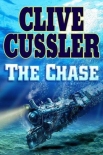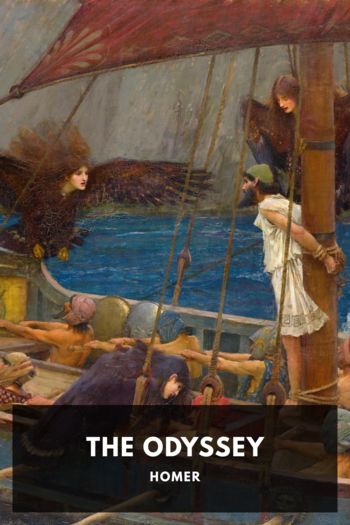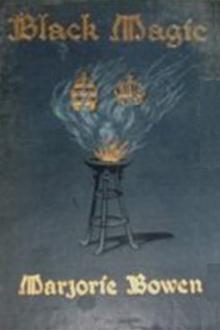The Chase, Clive Cussler [best memoirs of all time txt] 📗

- Author: Clive Cussler
Book online «The Chase, Clive Cussler [best memoirs of all time txt] 📗». Author Clive Cussler
Irvine pushed on to the next robbed bank on his list and took the Northern Pacific Railroad to the mining town of Elkhorn, Montana, located at an elevation of 6,444 feet above sea level. A booming mining town with twenty-five hundred residents, Elkhorn had produced some ten million dollars in gold and silver from 1872 until 1906. The Butcher Bandit had robbed its bank three years earlier, leaving four dead bodies behind.
Just before the train pulled into the town station, Irvine studied, for the tenth time since leaving Bozeman, the report on the robbery in Elkhorn. It was the same modus operandi the bandit used on all his other robberies. Disguised as a miner, he entered the bank soon after the currency shipment had arrived to pay the three thousand men working the quartz lodes. As usual, there were no witnesses to the actual crime. All four victims—the bank manager, a teller, and a husband and wife making a withdrawal—had been shot in the head at close range. Again, the shots went unheard, and the bandit escaped into the atmosphere without leaving a clue.
Irvine checked into the Grand Hotel before walking down the street to the Marvin Schmidt Bank, its new name taken from the miner who bought it. The architecture of the bank building was typical of the current style in most mining towns. Local stone laid with a Gothic theme. He walked though a corner door, facing the intersection of Old Creek and Pinon Streets. The manager sat behind a low partition not far from a massive steel safe painted with a huge elk standing on a rock outcropping.
“Mr. Sigler?” inquired Irvine.
A young man with black hair, brushed back and oiled, looked up at the greeting. His eyes were a shade of dark green, and his features indicated Indian blood in his ancestry. He wore comfortable cotton pants, a shirt with soft collar, and no tie. He lifted a pair of spectacles from the desk and set them on the bridge of his nose.
“I’m Sigler. How can I help you?”
“I’m Glenn Irvine with the Van Dorn Detective Agency, here for an investigation into the robbery a few years ago.”
Sigler quickly frowned with an attitude of annoyance. “Don’t you think it’s a little late for Van Dorn to arrive on the scene? The robbery and murders took place back in 1903.”
“We were not engaged to make an investigation at that time,” Irvine retorted.
“So why are you here at this late date?”
“To record the serial numbers of the bills taken by the robbery, if they were listed in a register.”
“Who is paying for your services?” Sigler insisted.
Irvine could imagine Sigler’s distrust and incomprehension. He might have felt the same if he was in the bank manager’s shoes. “The United States government. They want the robberies and murders to stop.”
“Strikes me that the bastard can’t be caught,” Sigler said coldly.
“If he walks on two legs,” said Irvine confidently, “the Van Dorn Agency will catch him.”
“I’ll believe it when I see it,” Sigler said indifferently.
“May I see your register of serial numbers? If we have those from the stolen bills, we will make every effort to trace them.”
“What makes you think they were recorded?”
Irvine shrugged. “Nothing. But it never hurts to ask.”
Sigler fished around in his desk and retrieved a set of keys. “We keep all the old bank records in a storehouse behind the building.”
He motioned for Irvine to follow him as he led the way through a back door toward a small stone building sitting in the middle of the bank’s property. The door protested with a loud squeak as it opened on unoiled hinges. Inside, shelves held rows of ledgers and account books. A small table and chair sat at the back of the storeroom.
“Sit down, Mr. Irvine, and I’ll see what I can find.”
Irvine was not optimistic. Finding a bank that kept a record of serial numbers of its currency seemed highly improbable. It was a long shot, but every avenue had to be followed. He watched as Sigler went through several clothbound ledgers. At last, he opened one and nodded.
“Here you are,” Sigler said triumphantly. “The serial numbers our bookkeeper recorded of all the currency in the vault two days before the robbery. Some of the bills, of course, were distributed to customers. But most were taken by the bandit.”
Irvine was stunned as he opened the book and stared at the columns of neatly inked numbers within the lines of the pages. There were several different kinds of large banknotes. Gold certificates, silver certificates, notes issued by individual banks were recorded in the ledger. United States Treasury serial numbers were printed vertically and horizontally on the sides; the local bank that issued them added their own number at the bottom. Most came from the Continental & Commercial National Bank of Chicago and the Crocker First National Bank of San Francisco. He looked up at Sigler, now fired with elation.
“You don’t know what this means,” Irvine said, gratified beyond his greatest expectations. “Now we can pass out numbers on the stolen bills to every bank in the country where the bandit might have deposited them. Handbills with the numbers can also be distributed to merchants throughout the West, urging them to be on the lookout for the bills.”
“Good luck,” said Sigler pessimistically. “It’s hardly possible that you can trace them back three years. Any one of them could have changed hands a hundred times by now.”
“You’re probably right, but hopefully the bandit is still spending them.”
“Slim chance of that,” Sigler said with a tight grin. “I’ll bet a month’s wage he spent it all a long time ago.”
Sigler was probably right, Irvine thought. But Irvine was not discouraged. Bell had said that it would be an insignificant mistake that would trip the bandit up. Now it was only a





Comments (0)